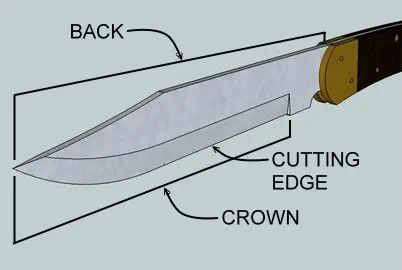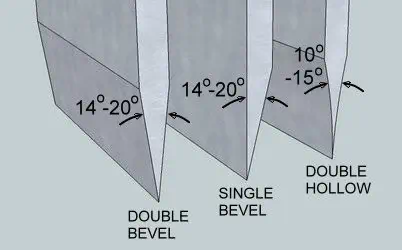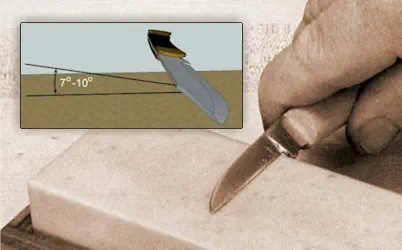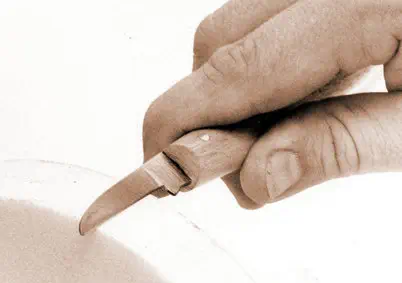A bench knife or a pocket knife may look simple, but these common tools are the results of thousands of years of careful engineering. The back keeps the knife stiff, while the wedge-shaped blade tapers down to a low-angle cutting edge. This edge often has a curve or crown that helps you control the cut.
And despite its apparent simplicity, a knife can be deceptively complex to sharpen. Not only is the profile often curved, the cutting edge is ground along the side of the blade rather than the tip. Additionally, the cutting edges of most knives have two bevels and must be ground from both sides. Because of this, many craftsmen find it easier to hold the knife in their hands as they sharpen, maintaining the tool angle by eye.






